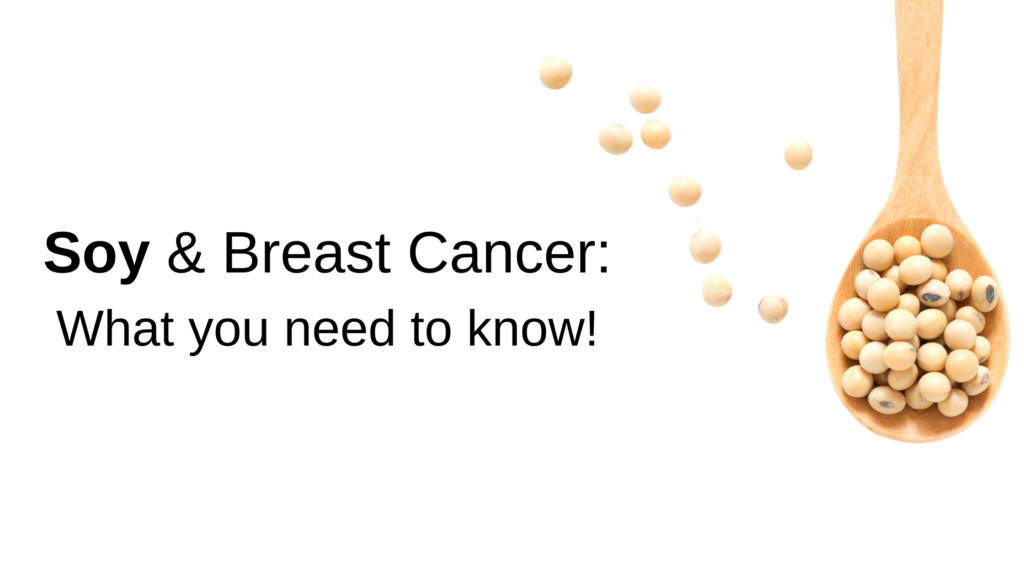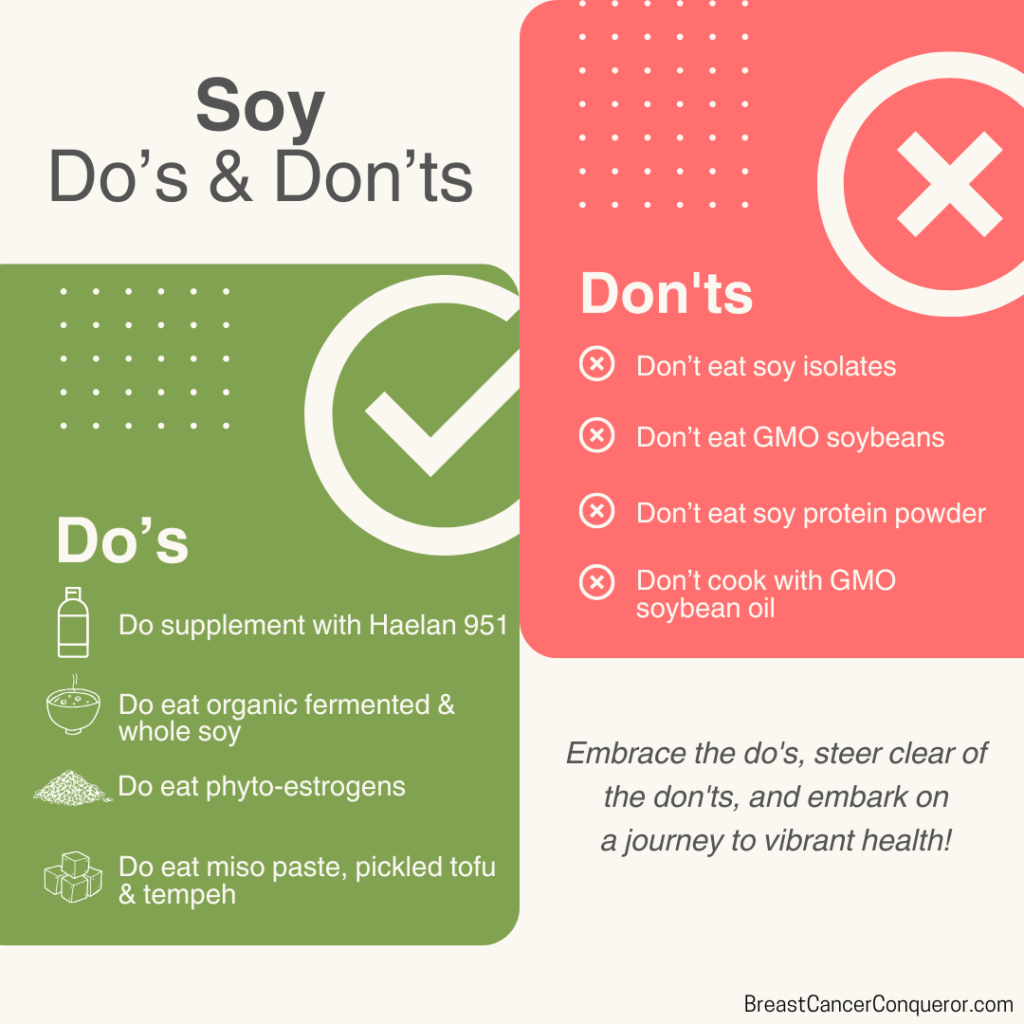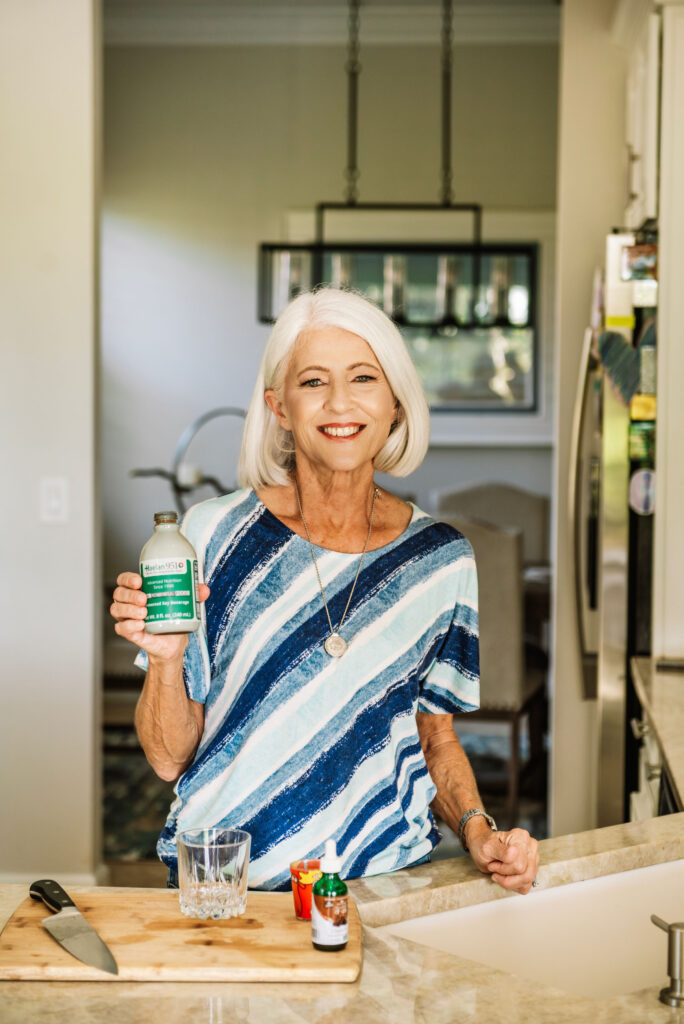
Quick Read:
- Fermented and whole soy (Haelan 951, organic miso paste (recipes), pickled tofu, etc.) are healing.
- Soy isolates (GMO soybeans, meat substitutes, soy protein powder, etc.) are harmful.
- Phyto-estrogens are plant estrogens (from flax, soy, and many other things) that are safe, gentle, and healing.
There’s a ton of confusion and misleading information around soy and estrogens, so think of this blog post as your personal guide to demystifying soy. They greatly help or harm your healing journey, especially if you are part of the 70-80% of women with estrogen receptor-positive (ER-positive) cancers. Since these types of cancers thrive in the presence of estrogen, especially toxic estrogen, anything that throws off your natural balance should be something to fully understand and be intentional about—which is why you are reading this blog!
Are all forms of soy and estrogen the same?
NO, Absolutely NOT! If you read nothing else in this post, please know these two things:
- Fermented soy (Haelan 951, organic miso paste (recipes), pickled tofu, etc.) is HEALING, but soy isolates (GMO soybeans and oil, soy protein powder, etc.) are harmful.
- Phyto-estrogens are HEALING, but xeno-estrogens are harmful. Please review this blog post for details.
Therefore, you should never listen to anyone who makes basic, cookie-cutter statements about something. Always dive into the details!
The Estrogen Puzzle: Why It Matters
Estrogen is a vital hormone for many functions in the body. As you know, it impacts your mood, breast health, inflammation levels, cognitive function, and so much more. But when there’s too much of it—or when the body can’t properly eliminate it—estrogen dominance can occur. This imbalance can drive the growth of ER-positive breast cancer. We could write countless blogs about this topic, but if you are curious to learn more, please read this blog post about your EQ ratio.
Xeno-estrogens (bad estrogen)
And in today’s world, we’re constantly bombarded with estrogen-mimicking toxic chemicals—xenoestrogens. They are found in plastics, cosmetics, pharmaceuticals, cookware, cars, food preservatives, cereals, environmental toxins—literally everywhere. (Read this blog post to learn more). These imposters latch onto estrogen receptor sites and confuse the body, often triggering inflammation and uncontrolled cancer cell growth. Another reason why it is crucial to be intentional about what you eat, drink, wear, use, etc., and so is regular detoxing!
Phyto-estrogens (good estrogen)
On the opposite end, we have phytoestrogens—plant-estrogens. You can find them in foods such as flax and soy (fermented and whole). However, many people lump their fear of “estrogen mimickers” with these safe, gentle, and healing estrogens. Phyto-estrogens fill receptor sites (more on this soon) with healing estrogens and flush out the dangerous kinds. On top of providing the type of estrogen you want, flax and soy (fermented and whole) are powerful breast cancer fighters.
Flax
Flax inhibits the growth of the blood vessels that feed breast cancer tumors, can stop cancer cells from spreading, and slow down metastasis. The process is called SERM (Selective Estrogen Receptor Modulation). SERM can lower estrogen in one area of the body (such as the breast) while increasing it in another, such as the brain and bones. Flax also contains a cytotoxic substance called Justicidin B, which causes apoptosis (cancer cell death) in breast cancer cell lines. (2024 Study) Therefore, take flax supplements and make it a healing part of your day with our flaxseed waffles and biscuits.
Fermented and Whole Soy
If you’re going to add soy to your healing toolbox, it’s CRITICAL to focus on fermented or whole soy—not toxic genetically modified (GMO) products like soy protein isolates or soy-based meat substitutes. Fermentation enhances the bioavailability of nutrients and increases beneficial compounds like genistein and daidzein—two isoflavones that have shown promising anti-cancer effects.

Receptor Sites: ER-alpha (ER-α) and ER-beta (ER-β).
There are two types of estrogen receptors: ER-alpha (ER-a) and ER-beta (ER-b). The more aggressive estrogens and xenoestrogens latch onto ER-α. Fermented soy prefers ER-b, which is known to slow cell proliferation and even support cellular repair. It also reduces the number of ER-a sites in cells. This means fewer ER-a sites means fewer places for toxic, aggressive estrogens to land and less opportunity for ER-positive cancer cells to grow. (Study)
How to include fermented soy in your breast cancer healing journey:
Fermented soy includes foods like organic miso, tempeh, natto, and specially formulated products like Haelan 951. 
Haelan 951 is Dr. V’s top choice of organic, non-GMO concentrated fermented soy because it plays a crucial role in her body’s ability to heal. This masterfully created beverage is a powerhouse of bioavailable nutrients known for its anti-cancer properties. Packed with isoflavones, saponins, and antioxidants, Haelan can:
- Combat oxidative stress: Its antioxidants neutralize free radicals, reducing damage to healthy cells.
- Support immune health: Haelan enhances the immune system’s ability to detect and destroy harmful cells.
- Boost gut health: The fermentation process increases nutrient absorption and promotes a healthy gut microbiome.
- Slow cell proliferation: As stated above, concentrated amounts of fermented soy create an environment where cancer cells can not live.
Fermented Soy and Breast Cancer Studies
If you are curious about further investigating the latest research on fermented soy and breast cancer, please review this 2020 study: Fermented and nonfermented soy foods and the risk of breast cancer in a Japanese population‐based cohort study. For more education, please read Shanghai Women’s Health Study, one of the most extensive epidemiological studies on soy and breast cancer. It found that women who consumed higher amounts of soy isoflavones after diagnosis had a 29% lower risk of death and a 32% lower risk of recurrence.
Like these studies, most have been done in places such as Japan and China, where soy is a part of their daily diet. It’s also fascinating to note that for most of history, breast cancer was not an issue until “The rate of breast cancer has been going up in Japan and is being attributed to the rise of Western influence on the Japanese culture.”
We do believe fermented soy and other Asian staples, such as seaweed, are the reason why rates of cancer are protecting women from cancer. To learn more about seaweed’s anti-cancer effects, please read this blog post.
Soy CAN Be a Breast Cancer Healing Solution!
This is not fringe science. The evidence has always been there, and the research continues to grow that natural, whole-food sources of phytoestrogens—especially from fermented soy—can support hormonal balance, gut health, and cancer and cellular healing.
Therefore, do not put all types of soy in the “bad basket.” Because as you know now, the truth is we don’t need to fear soy. In its organic, non-GMO, fermented form, soy can be a powerful ally in your healing journey. Rather than acting like estrogen in the body, fermented soy can block the harmful effects of excess estrogen, support the body’s detoxification processes, and help restore hormonal balance.
Your body has the innate wisdom to heal. You just need to give it the right tools.